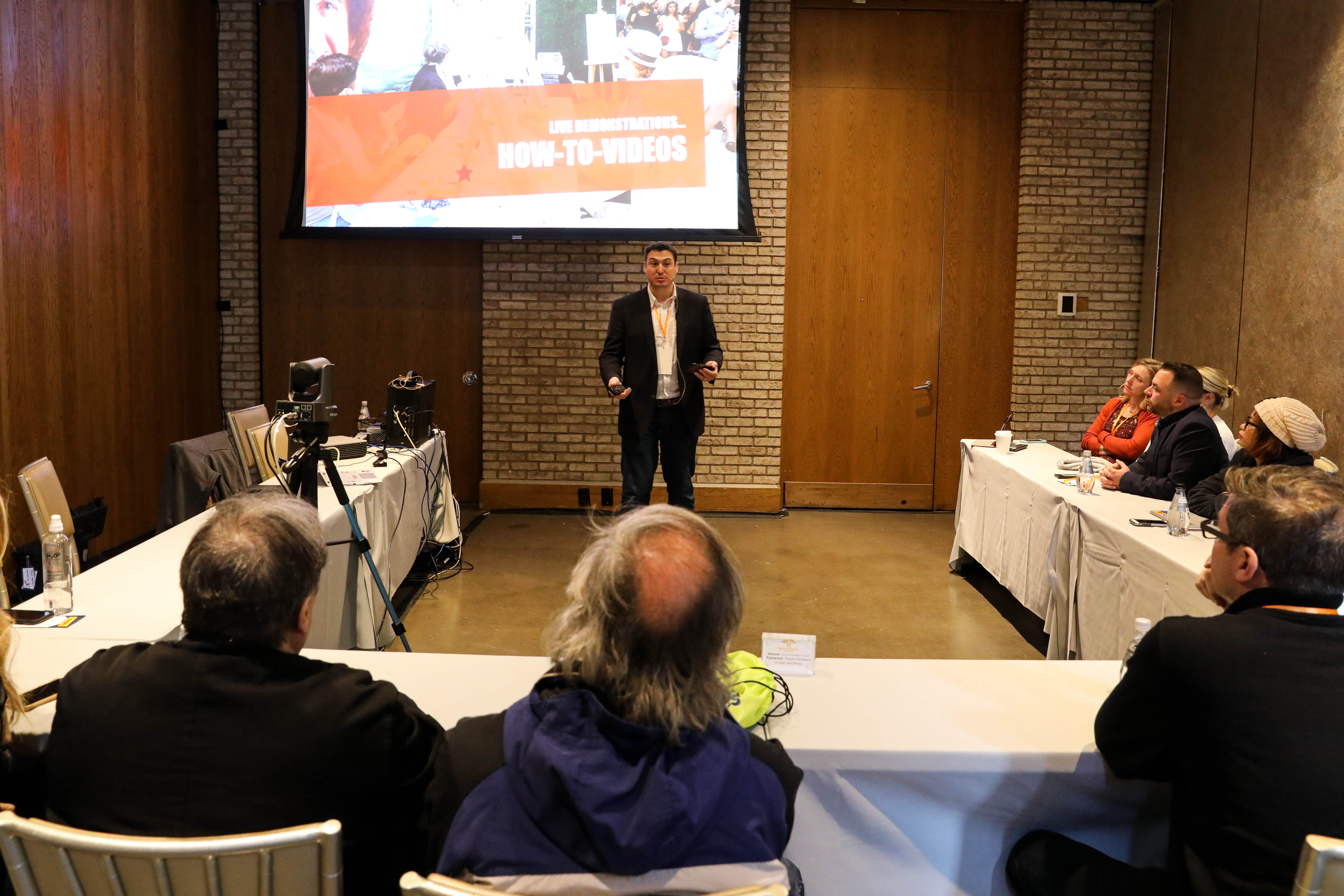Hybrid Events Are Good, Actually—Here's Why
In-person events are back, but there's still a global audience looking for live streaming and VOD content from trade shows.

In the dark days of 2020, as virtual events took off as a replacement for in-person gatherings, many events industry observers firmly predicted that, even post-pandemic, trade shows would be forever changed.
“Even when events become physical again, they will require a hybrid approach so that attendees have options to remain safe and comfortable,” Mark Roberts told the Trade Show News Network. “This means that some aspects of the show…will remain virtual for greater access and reach.”

Bill Conerly predicted in Forbes that trade shows would come back leaner and more business-focused: “Many associations will have one or two large meetings a year, with education in between conducted virtually. Trade show producers may want to consider that those who have been coming because of the education, and not because they are buyers, don’t add much value to the exhibitors.”
Both Roberts and Conerly had every logical reason to be right. Still, as in-person trade shows return in earnest in 2022, I can’t help but notice: Don’t the new trade shows seem an awful lot like the old ones?
Global Audience Opportunities
Yes, CES did belatedly and grudgingly offer a virtual component in 2022—but that was at the apex of the Omicron wave. The major tech shows of this spring and summer, including NAB, ISE, and InfoComm, are decidedly in-person affairs, including their training and education components. In fact, some of the shows are doing less in terms of live streaming and video-on-demand than they were before the pandemic.
[ISE Releases Final Show Numbers]
That’s a shame, because the global audience that industry observers like Roberts and Conerly saw developing over the last two years is definitely still out there. Many people are still staying home, due less now to the pandemic than to company policies, travel restrictions, and personal preference. Deloitte forecasts that by the end of this quarter, corporate travel spend will reach 36% of 2019 levels—and there’s no clear “full recovery” date in sight. If show organizers and exhibitors want to reach audiences comparable to the pre-COVID era, they have to offer a virtual component.
A daily selection of features, industry news, and analysis for AV/IT professionals. Sign up below.
At the recent NAB Show, PTZOptics offered some hybrid elements of our own as exhibitors. We broadcast from both the booth and the show floor, holding live Q&As and giveaways with our virtual audience. NAB 2022 was a great show—it beat the odds, reaching over half of 2019’s registered attendance—but a significant chunk of their audience is still stuck at home and eager for a window into the event.
Like NAB, ISE and InfoComm have compelling conference and education programs that this remote audience would love to attend virtually. I am delivering a talk on “Using NDI Bridge for Truly Remote Video Production” at this year’s InfoComm, which is ironic because therein probably lies the key to actually delivering transformed trade shows.
Tradeshow Realities
Let’s acknowledge realities here: Producing video content from a trade show is really expensive, and event organizers are trying to bounce back from two year of drought. A robust livestreaming or live video production program at a trade show requires a cost outlay of hundreds of thousands of dollars to cover everything from high-bandwidth network drops to camera operators to the construction of a temporary onsite video production studio to production team travel. Trade shows have a legitimate need to operate really lean this year, and it's easy to understand why they’d balk at such costs.
If show organizers and exhibitors want to reach audiences comparable to the pre-COVID era, they have to offer a virtual component.
Except…they don’t necessarily need all that stuff anymore. Let’s start with the obvious: Trade show education can benefit from the same camera technology advances as higher education lecture capture. Auto-tracking cameras, with optical zoom capabilities that make them suitable for even large seminar rooms, can capture high-quality video of even the liveliest presenter—no camera operator required. They won’t offer the production values you might want for a recorded keynote, but they are more than up to the task of providing global access to association and exhibitor training sessions. In fact, they’re already performing that role for some of the world’s leading education institutions.
Network costs and on-site production consume a larger chunk of the video production budget, but here again, technology advances have unlocked new, more efficient approaches. Remote production protocols like NDI Bridge and Medialooks are poised to bring a sea change to video production, breaking the traditional workflow where a producer must be alongside the camera or in a half-million-dollar production suite to capture and edit broadcast-quality content.
Using network-connected robotic cameras, producers will be able to control a production or live stream from anywhere, switching between cameras and presets, activating tally lights so the subject knows which camera is live, tracking subjects, and adding production effects. And I do mean anywhere. The producer could be in a traditional control room or at home working on a standard PC.

Even in locations with terrible Internet, such as a trade show floor, producers will have the ability to push content via NDI Bridge to a second location with stronger Internet and livestream from there. Conferences will be able to capture and livestream their content without having to build an on-site production suite—a potential six figure per-event savings.
It's not too late. Trade show organizers can still reach audiences that blow their 2019 numbers out of the water, if they embrace the new video production tools available to them. Far from a budget-buster, modern video production techniques could let them offer their exhibitors a whole new participation benefit: high-quality, reusable video assets that can reach audiences year-round.
Matt Davis is the director of technology & information systems for PTZOptics.

